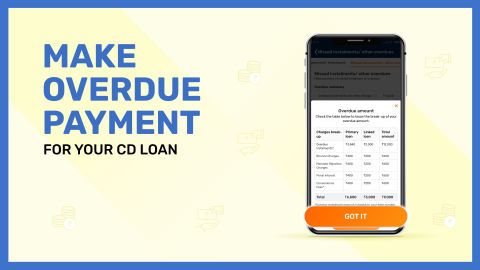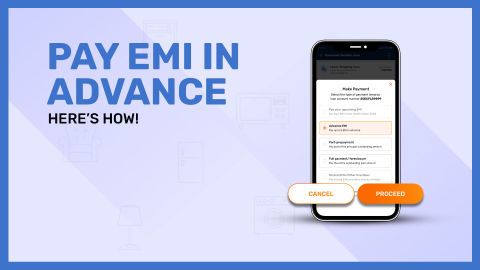Changing your EMI deduction account is a simple yet important process. It requires accurate documentation, timely submission, and proper verification to avoid missed payments or penalties. In this comprehensive guide, we will walk you through the reasons to make the change, the step-by-step procedure (both online and offline), required documents, and common challenges you may face during the update process.
Top of Form
Bottom of Form
Common reasons for wrong linked accounts in EMI deduction
Linking the correct bank account for EMI deduction is essential for the smooth repayment of your car loan. However, there are several reasons why an EMI may be deducted from the wrong account or not deducted at all. This can cause financial confusion, missed payments, penalty charges, and even a negative impact on your credit score. Understanding the common causes of wrong account linkage can help you identify and rectify these issues promptly—especially if you are planning to change car loan EMI deduction account for better control.Errors in bank details provided
One of the most frequent reasons for incorrect EMI deductions is an error in the bank details submitted during the loan application or mandate registration process. While filling out the NACH mandate form, borrowers may unintentionally provide incorrect account numbers, misspell the account holder's name, or enter an invalid IFSC code. Manual form filling increases the chances of these human errors.These inaccuracies might not get flagged during the initial verification and often remain undetected until the first EMI attempt. In such cases, EMI either bounces due to invalid details or is deducted from an unintended account. This not only causes repayment disruptions but may also attract non-payment penalties and bank charges.
Changes in business or personal bank accounts
Many individuals change their bank accounts due to personal preferences, relocation, account upgrades, or closures. Businesses may do so for operational restructuring, better banking services, or mergers. If the change in bank account is not promptly updated with the lender, EMI deductions may continue to be attempted on an inactive or closed account.This can result in failed transactions, late fees, and even auto-debit bounce penalties. In such scenarios, it becomes necessary to car loan EMI deduction account immediately to ensure future EMIs are processed without interruption. Failing to do so could also lead to a negative credit score due to missed payments.
Issues from the lender’s side
It is not always the borrower’s fault. Occasionally, technical errors or manual data entry mistakes occur on the lender’s end. Even when borrowers submit accurate bank details, the backend team may enter them incorrectly during processing. Additionally, if you have recently submitted a request to change your EMI account, it is possible that the old information remains active due to processing delays.There are also situations where the new bank account details are updated in the lender's system but are not linked with the auto-debit feature. This misalignment between the updated account and EMI processing system can result in failed or delayed deductions.
To avoid these issues, borrowers are encouraged to use the digital method to change car loan EMI deduction account through the official customer portal, ensuring faster turnaround and real-time tracking.
Steps to change the linked account for EMI deduction
Updating your EMI deduction account is a simple but essential process to avoid payment failures and maintain a good credit score. Whether you have changed your bank or want to streamline your financial management, follow these steps to successfully change car loan EMI deduction account.Step 1: Check lender’s policy on account changes
- Begin by visiting your lender’s official website or contacting their customer support to understand their policy for changing the EMI deduction account.
- Some lenders provide an online option, while others may require a physical visit to a branch or loan servicing centre.
- Confirm if there are any charges for the account change, especially if you are switching to a non-affiliate bank.
- Ensure that your new account supports NACH or ECS auto-debit functionalities, as required by most lenders.
- Also check if your loan type—personal, business, or vehicle loan—has any specific documentation or processing criteria.
Step 2: Contact the bank or lender via customer service
- Reach out to Bajaj Finance via their customer service helpline, online chat, or email to raise a formal request.
- Alternatively, visit your nearest Bajaj Finance branch and request assistance from a loan servicing executive.
- Ask for the EMI deduction account update form or the NACH mandate form that is required to complete the change.
- Inform the executive that you want to change Bajaj car loan EMI deduction account, and confirm the processing time and next steps.
Step 3: Submit required documents like a new NACH mandate
- Fill in the NACH mandate form with your updated bank account number, IFSC code, and account holder name.
- Attach supporting documents such as a cancelled cheque and a recent bank statement to verify the new account.
- Submit identity proof like PAN card or Aadhaar and include your car loan account number for accurate mapping.
- If your car loan is under a business entity, submit a valid business registration certificate.
- Make sure all signatures match your original loan documentation to avoid rejections.
Step 4: Confirm the update and monitor deductions
- After submission, you will receive an acknowledgment receipt or service request number.
- The lender typically processes the update in 3 to 7 working days.
- Once confirmed, you will get an SMS or email notification regarding the successful account change.
- Monitor your next EMI cycle to ensure the deduction occurs from the new account and not the previous one.
- Maintain sufficient balance in both accounts until the switch is confirmed to avoid EMI bounce.
- You can also track your car loan due date to avoid any last-minute confusion. If you are planning to reduce your EMIs or close your loan faster, consider making a part payment for car loan during this transition.
Documents required for changing the EMI deduction account
To successfully change Bajaj car loan EMI deduction account, your lender will require a set of documents to verify the new bank details and process the mandate update. These documents must be accurate, clearly legible, and submitted in the format prescribed by the lender—either online or at the branch.Below is a table listing the required documents, their purpose, and additional notes to ensure your application is not delayed due to verification errors:
| Document | Purpose | Additional Notes |
| Cancelled cheque of the new account | Verifies account number, IFSC code, and account holder name. | The cheque should be in your name and must be from the account to be linked. |
| Recent bank statement or passbook copy | Confirms account activity and ownership. | Preferably from the last 1–3 months; ensure the account is active. |
| Filled and signed NACH mandate form | Authorises the lender to debit EMIs from the new bank account. | Signature must match your original loan records to avoid rejection. |
| Photo ID proof (PAN, Aadhaar) | Confirms your identity and ensures records match the loan account. | Submit a self-attested copy; original may be required for verification in-branch. |
| Loan account number or reference ID | Ensures the correct mapping of the new account with your existing loan. | Mention clearly on all forms and communication. |
| Business registration document (if applicable) | Required for loans issued in a company or business name. | GST certificate, Udyam registration, or trade license may be accepted. |
Providing the correct documents upfront reduces the processing time and ensures that your next EMI is deducted from the updated account without disruption.
How long does it take to update the linked account?
When you request to change Bajaj car loan EMI deduction account, the update does not take place instantly. It involves a multi-step verification process including form validation, bank mandate approval, and backend system integration. Below are the key factors that affect how long it takes for your new EMI deduction account to become active:Standard processing timeline
- Typically, it takes between 3 to 7 working days for the lender to process your request once all documents have been correctly submitted.
- The timeline may vary depending on whether you submit the request online (faster) or offline (manual verification required).
NACH mandate approval duration
- After the lender receives your request, they forward the updated mandate to your new bank for activation.
- The bank’s internal mandate verification can take 2 to 4 additional working days depending on their processing speed and workload.
- Until the mandate is activated, EMI deductions will continue from the previously linked bank account.
Impact of submission errors
- Incorrect account numbers, mismatched signatures, or missing documents can delay the update.
- In such cases, the lender may reach out for re-submission, which resets the processing timeline entirely.
- Double-check all details before submission to avoid such setbacks.
Effect of holidays and weekends
- Submissions made before weekends or public holidays may face delays, as neither the lender nor the bank processes mandates during non-working days.
- To be safe, it is recommended to initiate the account change at least 10 working days before your car loan due date.
Confirmation and tracking
- Once the new account is linked and active, you will receive confirmation via SMS or email from your lender.
- You can also track the request status using your reference ID through the lender’s self-service portal.
What to do if the update is delayed
- If the new account is not active by the next EMI cycle, the payment may still be deducted from the old account.
- Keep both accounts funded to avoid EMI bounce.
- If the change still does not reflect after 10 working days, contact customer service immediately.
Planning ahead
- To avoid last-minute issues, especially if you are considering a part payment for car loan, complete the account update well in advance.
- Always confirm that your new bank supports NACH auto-debits to ensure a smooth transition.
Conclusion
Changing your EMI deduction account is an important part of car loan management. Whether you are facing technical issues, switching banks, or upgrading to a new financial setup, it is essential to change Bajaj car loan EMI deduction account using the correct procedure and documentation.
By being proactive, checking your loan details regularly, and following the steps outlined in this guide, you can avoid failed EMIs, penalty charges, and disruptions in your loan schedule. Use digital tools for faster processing, and make sure your mandate is authorised well in advance of your car loan due date.
Also, consider making a part payment for car loan to reduce your total interest payout. Staying in control of both your repayment account and your loan strategy puts you on the path to financial stability and early debt freedom.




